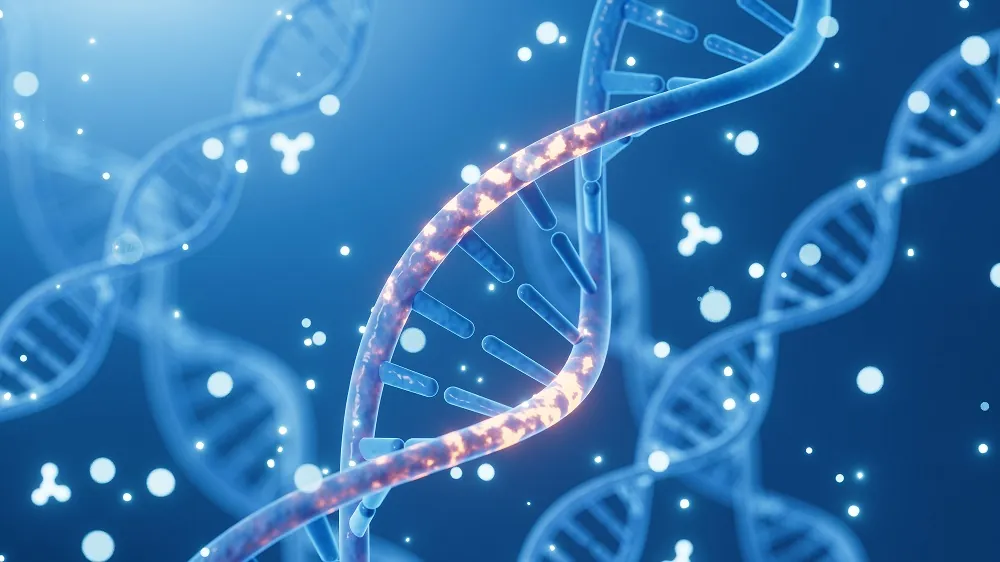Researchers have shown that age-related loss of bone maintenance is caused by changes in gene expression [1]. Perhaps most importantly, those changes can also be reversed and the bone marrow stem cells rejuvenated.
Bones become weaker as we age as stem cell function declines
With advancing age, it is typical for our bones to become thinner and structurally weaker. The risk of suffering fractures and developing bone diseases such as osteoporosis also rises as we get older. With this, the danger of falls rises, which can have deadly consequences.
One of the reasons this happens is because the bone marrow stem cells stop functioning properly and the upkeep and supply of fresh replacement bone cells declines. This results in increasingly poorer bone integrity and structure.
A team of researchers from the Max Planck Institute for Biology of Ageing and CECAD Cluster of Excellence for Ageing Research at the University of Cologne have demonstrated that this loss of function is caused by epigenetic alterations.
Epigenetic alterations change what genes are expressed, and those changes follow a predictable pattern as we age. The researchers showed that these alterations occur in bone marrow stem cells too.
They compared the epigenomes of stem cells taken from young and old mice. They found that there were significant differences between the two. In particular, genes that play a key role in bone structure were less active in old mice.
But, how do these epigenetic alterations happen? There are four main ways these changes occur:
- Changes to DNA methylation patterns modify which genes are expressed or silenced, which can cause harmful alterations to cell function and behavior.
- Histone modification changes how tightly DNA is packed into the nucleus and helps condense it into chromatin. More histone expression supports longevity.
- Transcriptional alterations represent a variance in gene expression, leading to increasingly harmful influence over cellular function.
- Remodeling of chromatin is an alteration to the DNA support structure that helps or hinders gene expression.
You can learn more about epigenetic alterations and why they are an important cause of aging here:

Read More
Rejuvenating old stem cells
Perhaps more exciting was that the researchers were also able to reverse these epigenetic changes in the bone marrow stem cells by adding acetate. This paves the way for rejuvenation of the bone-marrow stem cells and combating diseases such as osteoporosis.
They exposed bone marrow stem cells from mice to a nutrient solution that included sodium acetate. The stem cells use the acetate to allow enzymes to attach to the histones, which, in turn, increases access to genes and can increase their expression. The result of this increased gene activity was to rejuvenate the epigenome; in other words, it made the stem cells functionally younger and able to produce more bone cells.
Next, the researchers investigated if these epigenetic alterations also increased the risk of bone fractures or osteoporosis in people. To do this, they examined mesenchymal stem cells taken from patients following hip surgery. They found that the cells from older people who also had osteoporosis had the same epigenetic alterations as seen in mice.
Abstract
Aging is accompanied by a general decline in the function of many cellular pathways. However, whether these are causally or functionally interconnected remains elusive. Here, we study the effect of mitochondrial–nuclear communication on stem cell aging. We show that aged mesenchymal stem cells exhibit reduced chromatin accessibility and lower histone acetylation, particularly on promoters and enhancers of osteogenic genes. The reduced histone acetylation is due to impaired export of mitochondrial acetyl-CoA, owing to the lower levels of citrate carrier (CiC). We demonstrate that aged cells showed enhanced lysosomal degradation of CiC, which is mediated via mitochondrial-derived vesicles. Strikingly, restoring cytosolic acetyl-CoA levels either by exogenous CiC expression or via acetate supplementation, remodels the chromatin landscape and rescues the osteogenesis defects of aged mesenchymal stem cells. Collectively, our results establish a tight, age-dependent connection between mitochondrial quality control, chromatin and stem cell fate, which are linked together by CiC.
Conclusion
This study opens the door for potential ways to combat osteoporosis and other, similar conditions by rejuvenating the bone marrow stem cells. The challenge will be to deliver acetate only to the target cells, as the use of acetate is very specific to them. If such a therapy can be made to work, it will be further confirmation that targeting the aging processes directly is the way to go.
Of course, partial cellular reprogramming also has the potential to address this by rewinding the aging clock on these and other cells. You can read more about how cells can be reprogrammed to become younger in our article Yamanaka Factors and Making Old Cells Young.
Literature
[1] Pouikli, A., Parekh, S., Maleszewska, M., Nikopoulou, C., Baghdadi, M., Tripodi, I., … & Tessarz, P. (2021). Chromatin remodeling due to degradation of citrate carrier impairs osteogenesis of aged mesenchymal stem cells. Nature Aging, 1-16.





